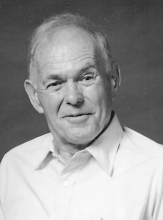 |
 |
 |
 |
 |
 |
 |
 |
 |
 |
 |
 |
|
Alumni
|
Alumni: John G. Phillips, 1948 Ph.D., University of Chicago, 1948 January 9, 1917 - June 1, 2001 Webpage Phillips was born in West Haven (now part of New Haven), Connecticut on 9 January 1917. He was the eldest of four children; he had two brothers and a sister. His father, Ray Edmund Phillips, was a Congregationalist missionary who was assigned to South Africa soon after John was born. John's childhood was spent in Johannesburg where he received his early education. Phillips returned to the United States to attend Carleton College, graduating in 1939, and completing an MS degree in 1942 at the University of Arizona. During World War II, he served as an Instructor of Meteorology at the University of Chicago. After a brief period working in an industrial laboratory, he was accepted in the astrophysics program at the University of Chicago's Yerkes Observatory. Studying the spectroscopy of molecules of astronomical importance with some of the foremost astrophysicists of that time, he earned a PhD in Astronomy from the University of Chicago. His 1948 dissertation on the diatomic carbon molecule was based on his research under the direction of Gerhard Herzberg. After two years as an instructor at Yerkes, Phillips joined the Astronomy faculty of the University of California at Berkeley in 1950. In 1960 he was advanced to Professor of Astronomy, and served as Chairman of the Department from 1964 to 1967 and again from 1971 to 1974 before retiring in 1987. Phillips' scientific contributions were in two main areas, the analysis of the spectra of molecules, and in the design and construction of advanced instrumentation to speed and improve such analyses. He was an early advocate of the importance of computers and made excellent use of them in his work. Phillips published more than 60 scientific papers, many of them in collaboration with Professor Sumner Davis of the Berkeley Physics Department. In addition, Phillips published the bi-monthly "Newsletter of Molecular Analyses" for more than 40 years, first in collaboration with F.A. Jenkins, and later with Sumner Davis. This newsletter, which circulated to several hundred spectroscopists and libraries internationally, reviewed current molecular analyses by spectroscopists worldwide; it continues today under new auspices. |

